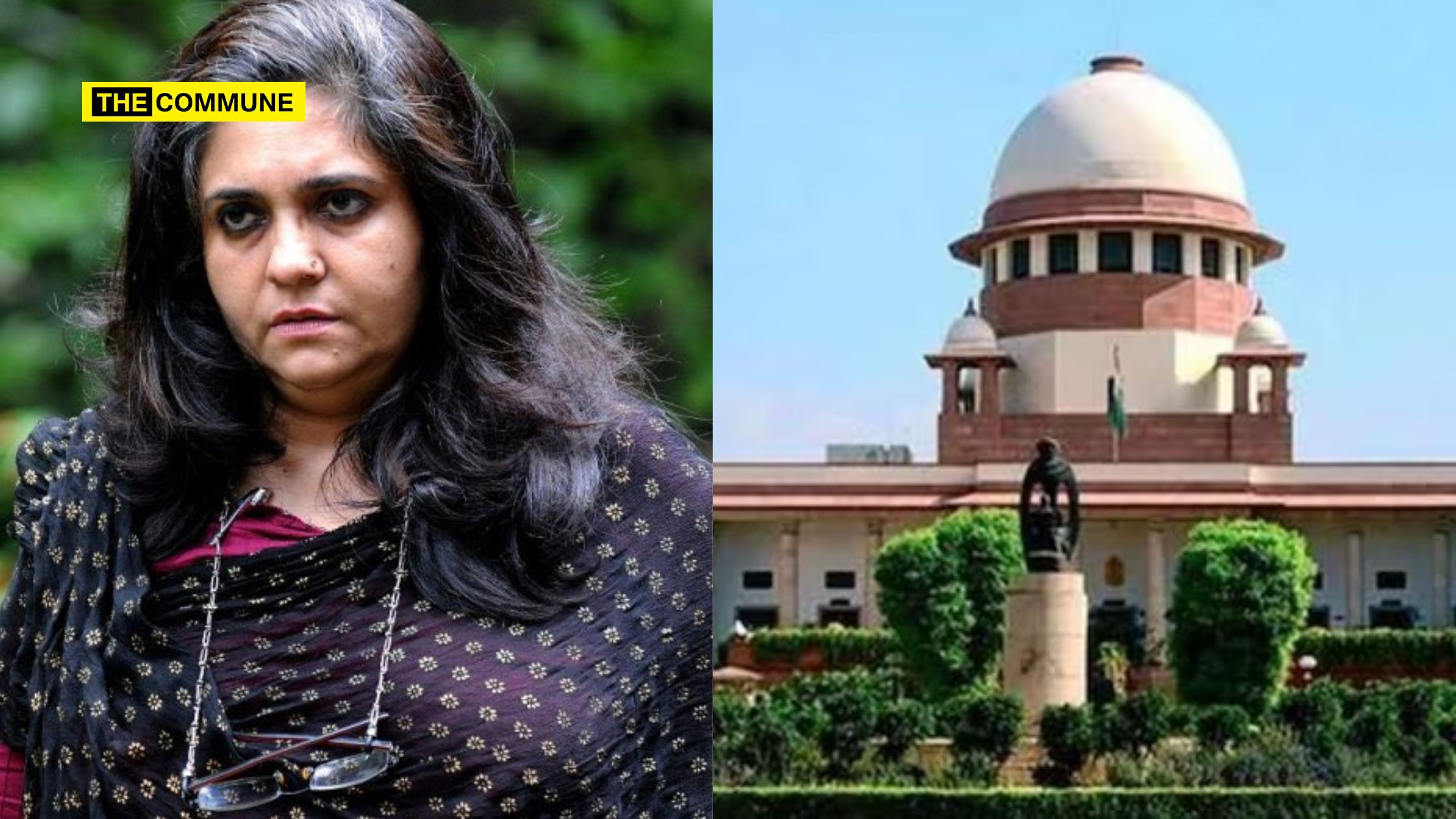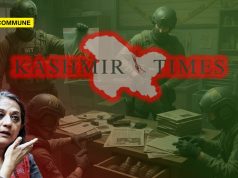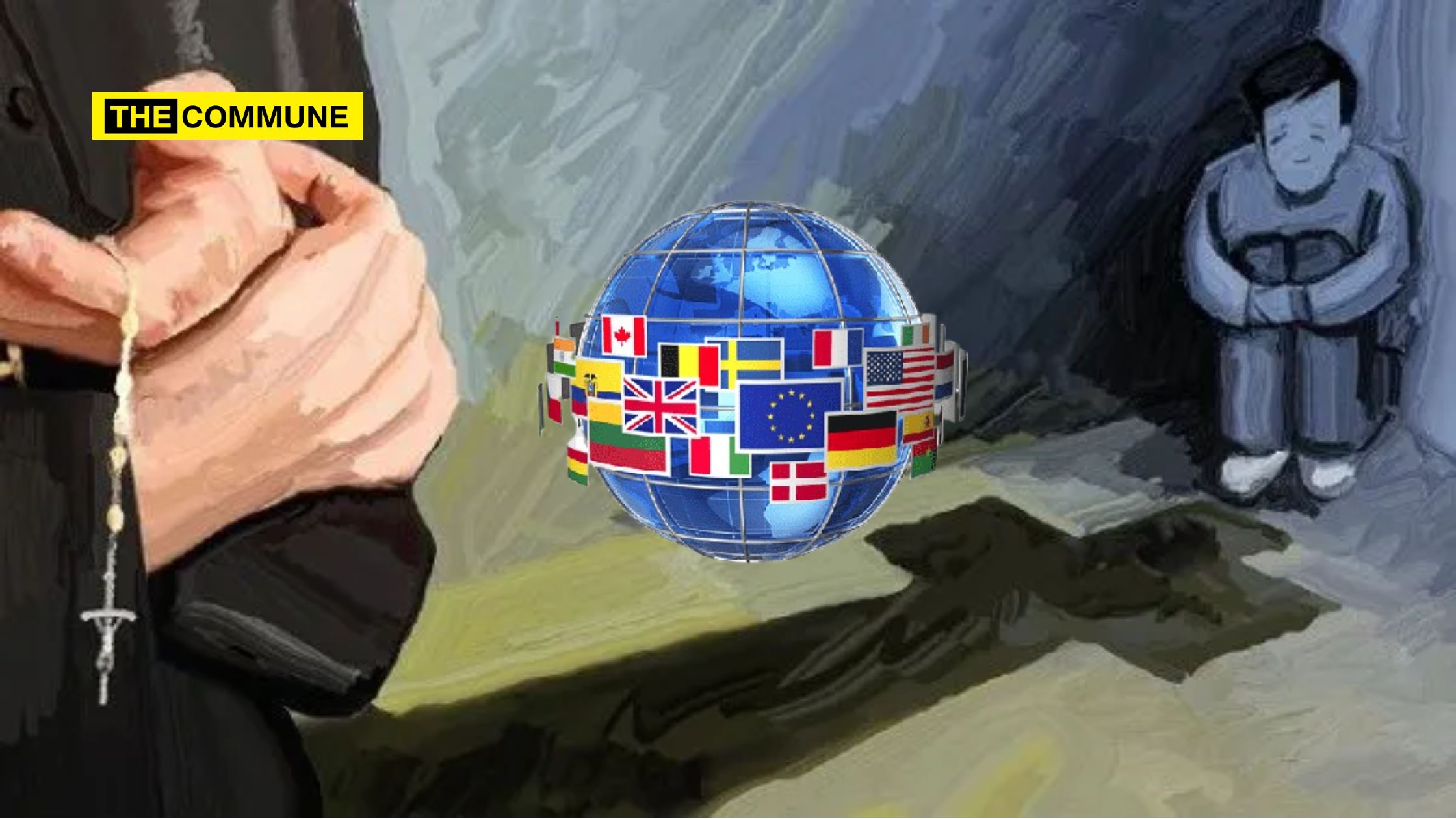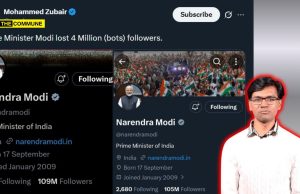
In a late-night hearing on Saturday, 1 July 2023, the Supreme Court prevented ‘social activist’ Teesta Setalvad from surrendering after the Gujarat High Court rejected her bail earlier in the day. Setalvad is accused of falsifying evidence, coaching eyewitnesses, and disparaging the government of Gujarat in relation to the Gujarat Riots of 2002. A three-judge panel of the Supreme Court granted temporary release to controversial campaigner Teesta Setalvad in a sensational late-night hearing. This ruling granted Teesta Setalvad one week of temporary bail, extending the Gujarat High Court’s order to surrender promptly by one week. The case was being heard by a panel of Justices BR Gavai, AS Bopanna, and Dipankar Datta.
The bigger three-judge panel was established after a two-judge bench comprising judges Abhay S Oka and Prashant Kumar Mishra failed to reach an agreement on the appeal challenging the Gujarat High Court ruling denying regular bail. The bench of two judges had asked the CJI to assemble a bigger bench the same evening, and the larger bench was constituted promptly, with the hearing scheduled for 9.15 PM that day. The hurry to get justice for self-proclaimed activist Setalvad has raised many eyebrows. While the Supreme Court is beset by delays in bringing justice to the ordinary man, it has shown remarkable vigour in safeguarding an activist whom the Gujarat High Court described as a lady who ‘used victims as a ladder to earn Padma Shri, damage image of then CM Narendra Modi.’
What Is The Case Against Setalvad?
Setalvad is suspected of participating in a bigger conspiracy concerning the 2002 Gujarat riots and attempting to incriminate Prime Minister Modi and others in the outbreak of violence. The prosecution said that she got thirty lakh rupees through late Congress leader Ahmed Patel with the intention of influencing the Gujarat administration led by Modi in the aftermath of the 2002 post-Godhra riot cases. On 25 June 2022, the activist-journalist was taken into custody along with two others for forging evidence in order to incriminate “innocent people” in the cases.
After the Supreme Court dismissed the petition brought by Zakia Jafri, widow of late Congress MP Ehsan Jafri, who contested the SIT’s clean chit awarded to Modi and others, an FIR was filed against her, former Gujarat Director General of Police RB Sreekumar, and ex-IPS officer Sanjiv Bhatt. Jafri said there was a “larger conspiracy” behind the post-Godhra violence. The SIT in the Supreme Court had challenged the plea underlining that her complaint was guided by Teesta Setalvad, who levied allegations only to “keep the pot boiling.” Setalvad was given the Padma Shri, one of the highest civilian honours in the country, in 2007 under the Congress-led UPA govt. She was also a former member of the erstwhile Planning Commission, maintaining strong relations with the Congress leadership.
The Larger Picture
Aside from stoking communal fires during the Gujarat riots, Teesta has been intimately associated with Congress leadership and other phoney activists associated with George Soros and his anti-India campaign. Sunita Viswanath is one such individual. Sunita claims to have worked on women’s issues in Afghanistan, although her work makes no mention of Afghanistan’s minority Hindus and Sikhs. A unifying thread that binds these persons, Congress, Teesta, and Sunita, is their conviction in demeaning Hindus and India’s underlying religious system.
The same gang recently organised a three-day virtual conference called India on the Brink: Preventing Genocide. According to Teesta Setalvad, hate speeches and hate crimes facilitated the genocide in Gujarat in 2002, which murdered over 2,000 people, the majority of whom were Muslims. Muslims were not permitted to return to their communities for three months, she claimed, describing the effects of the horrific violence carried out by so-called Hindu radicals under Mr. Modi’s administration. Sunita has also expressed concern over the impending Muslim genocide in India.
It is interesting to note that the Gujarat High Court rejected her bail citing her role in spreading false rumours about the riots in Gujarat in a disinformation campaign. So, what were their intentions? Fanning communal disharmony? Sunita had already met Rahul Gandhi during his visit to the US in June 2023.
Rahul Gandhi must explain why he met Sunita Vishwanath, an associate of George Soros, who has publicly vowed to destabilise India’s democratically elected Govt. He must also explain what was Salil Shetty, global vice president of George Soros’s Open Society doing in the Bharat… pic.twitter.com/yNbt5QDn0I
— Amit Malviya (@amitmalviya) June 28, 2023
Not just that. Rahul Gandhi’s appearance in New York on June 4th was organised by members of Pakistan’s Jamaat-e-Islami. Tanzeem Ansari, the Amir of the Muslim Communities of New Jersey’s (MCNJ) Outreach Committee, was a notable figure.
Manuve is a regular at Jamaat fronts – Save India & #IAMC – both founded by Shaik Ubaid and both have eminent ‘experts’ – CJ Werleman & Pieter Friedrich as resource persons.
(4/11) pic.twitter.com/0m31D7QN9Q
— DisInfo Lab (@DisinfoLab) April 28, 2022
MCNJ is led by Imaam Jawad Ahmed, a Pakistan-born native who is well-known in US Islamist circles. He attended Jamaat front Islamic Circle of North America (ICNA) events which promoted Pakistani propaganda against India in the pretext of human rights. ICNA is a significant Jamaat front with multiple chapters and connections to extreme and terrorist organisations. The organisation is renowned for supporting and celebrating Pakistani state-sponsored terrorists.
And Teesta, whom the court protected zealously, is closely affiliated with these organisations. It is also said that Teesta has close ties to the judiciary.
#TeestaSetalvad has very deep connections with Judiciary.
– Teesta belongs to Guju family
– Her Great Grandfather barrister Chimanlal Setalvaad was part of infamous Hunter commission who gave clean chit to General Dyer. He was a good friend of Motilal Nehru.
1/10 pic.twitter.com/JPPClaQmcW— Vishal Upadhyay🇮🇳 (@VishalU15) July 3, 2023
Her great-grandfather, lawyer Chimanlal Setalvaad, was a member of the infamous Hunter panel, which cleared General Dyer. He was Motilal Nehru’s close buddy. Her grandfather, M.C. Setalwaad, was a prominent lawyer and close companion of Jawaharlal Nehru and Sheikh Abdullah. From 1950 through 1962, he was the longest-serving Attorney General. He was the head of the Bar Council before becoming a Congress MLA. Atul Setalvaad, her father, served as a High Court lawyer. His close buddy Sam Bharucha was appointed CJI. Indira Jaisingh is another close buddy of his.
The Mighty Judiciary To Her Rescue
Despite all the available evidence, the court deemed it necessary to come to Teesta’s aid in an unorthodox method late at night on a Saturday. It was revealed that at the time the Chief Justice of India DY Chandrachud got word about the two-judge bench’s decision to refer the case to a bigger court because they could not reach a unanimous judgement on prolonging Setalvad’s bail, he was attending a Bharatnatyam performance. Sources indicate that the CJI exited the chamber many times in order to facilitate the setting up of a bench of three judges to hear the petition promptly. According to NDTV, the CJI was at Chinmaya Mission to witness Suvarna Vishvanathan’s Bharatanatyam performance (Suvarna is the daughter of the supreme court judge KV Vishvanathan).
The majority of those involved in the hearing were present, notably Solicitor General Tushar Mehta. After the dance performance began around 6 PM, Setalvad’s counsel appealed to the Supreme Court against the Gujarat High Court’s order for surrendering immediately. The argument was set to begin at 6:30 PM in front of Justices AS Oka and Prashant Kumar Mishra. After being told, SG Mehta left the show to appear for the Gujarat government. After the bench of two judges failed to reach a majority verdict, the case was sent to the CJI, who remained at the event. CJI was observed exiting the hall at about 7 PM.
In the meantime, SG Mehta reappeared at the event. CJI then departed for 10 minutes before returning to watch the show. After the dance performance, he alerted Justices BR Gavai and AS Bopanna about the situation. They consented to join the bigger bench, which also included two of the judges and Justice Deepankar Datta. The hearing started at 9:15 PM. The judge provided Setalvad with interim protection from arrest at about 10 PM. The way the top court reacted to the situation even when justice has been denied to millions of common people makes one question the hypocrisy of the judiciary.
Following a special night session in which the Supreme Court of India granted interim bail to notorious ‘activist’ Teesta Setalvad, the Chief Justice of India (CJI) DY Chandrachud has since warned litigants and attorneys not to rush to the supreme court for ‘everything and everything.’ These patterns are being repeated, leaving the average man befuddled. Previously, Chief Justice of India Dipak Misra, who urged for the use of arrest authority judiciously in the case of alleged fact-checker Mohammed Zubair’s detention, refused to intervene in the Tamil Nadu government’s application of the National Securities Act against Bihar YouTuber Manish Kashyap.
Judiciary Embroiled In Controversies
The immediate bail granted to Teesta has turned heads, but it will be even more chilling to learn that conflicts involving the judiciary have become on the rise recently. Judge Ranjan Gogoi assumed the position of the 46th Chief Justice of India in October 2018. However, in April 2019, he was accused of sexual harassment by a former female Supreme Court employee. The lady had filed a complaint with the Supreme Court’s Secretary General, which was later heard by a three-member in-house committee comprising justices S.A. Bobde, Indu Malhotra, and Indira Banerjee. However, Justice Gogoi ruled over the committee as its head, prompting complaints that he had been sitting over his own case and that this violated natural justice norms.
A person cannot serve as a judge in his or her own case, according to the concept of natural justice. This concept holds that a judge must be unbiased and impartial, and it is impossible for someone to be neutral in a situation in which they are personally interested. Critics suggested that Justice Gogoi ought to have removed himself from the committee to guarantee that the charges concerning him were investigated impartially. However, Justice Gogoi justified his choice to chair the committee, claiming that it was vital to protect the judiciary’s credibility. The case triggered a debate regarding the judiciary’s independence and impartiality, as well as the need for stronger methods to manage workplace sexual harassment complaints.
N.V. Ramana was another Chief Justice who was entangled in scandal. Justice Kalyan Jyoti Sengupta, then Chief Justice of the Andhra Pradesh High Court, wrote to the Chief Justice of India in 2014, claiming that Justice Ramana was implicated in a land fraud in Andhra Pradesh. Another scandal arose in 2020 when Andhra Pradesh Chief Minister Y.S. Jagan Mohan Reddy’s letter was released to the public. The letter claimed that Justice Ramana was attempting to influence the operation of the Andhra Pradesh High Court in order to preserve specific interests and that he had strong ties with a former judge who was involved in a corruption case. Despite the charges, Justice Ramana was appointed as India’s Chief Justice in April 2021. There have also been other incidents of contempt of court over the past few years in India, demonstrating the ‘thin-skinned’ nature of the Indian courts, and the author believes that if the author continues, he may be one of them.
One of the most notorious recent examples demonstrating this thin-skinned attitude was the conviction of eminent lawyer Prashant Bhushan for contempt of court for tweets criticising the judiciary. However, the judiciary’s attempt to bring him to his knees failed when he sought a review on top of simply paying a one-rupee fine.
Another example was stand-up comedian Kunal Kamra, who was indicted with contempt for tweeting against the Supreme Court. The Delhi High Court has filed contempt charges against television caster Amish Devgan for making disparaging statements about a Sufi saint. These incidents demonstrate that the Indian judiciary is intolerant of criticism and dissent. The only place where the Hon’ble Court appears to tolerate disagreement appears to be in decisions.
Top Court Needs To Introspect
The court system has been chastised for failing to address the issue of judge vacancies and for its lack of diversity as a result of its opaque functioning. There were over 400 vacancies in the higher judiciary as of January 2022, contributing to the mounting backlog of cases in the Indian court system. According to data from the National Judicial Data Grid, 93 crore cases were pending in the subordinate courts, 49 lakhs in High Courts, and 57,987 cases in the Supreme Court as of December 2022. Critics have claimed that the collegium system is unprepared to deal with vacancies and that a more organized approach is required.
Instead of removing this stumbling block, the present Chief Justice of India is more concerned with why the Supreme Court’s restrooms only have male and female signage and not a universal toilet where “gender non-confirming” persons may relieve themselves.
Then there is the matter of the judiciary’s lack of diversity. A study conducted by the Vidhi Centre for Legal Policy in 2019 revealed that only 11.3% of judges serving in High Courts belonged to the Scheduled Castes (SC) and Scheduled Tribes (ST) communities. This statistic is disproportionately low considering that these communities make up approximately 25% of India’s total population. The representation of SC/ST justices in the Supreme Court has historically been low, with only 6 of the 247 judges appointed to September 2021 belonging to these communities. Other Backward Classes (OBCs) have a low representation in the court as well.
According to the same Vidhi research, just 12.5% of judges in High Courts were from the OBC community in 2019, although accounting for 41% of India’s population. There have only been a handful of OBC justices on the Supreme Court yet. The same is true for the representation of Christians and Muslims. According to the same Vidhi research, as of 2019, just 6% of High Court judges were Muslims, although constituting around 14% of India’s population.
Christians have considerably less representation, with only 0.7% of High Court judges being Christians, although accounting for around 2.3% of India’s population. Women are likewise underrepresented in the upper judiciary in terms of gender. As of 2021, there are only 11 women judges in the Supreme Court of India out of a total of 34 judges, and women are underrepresented in the high courts. While the judiciary has campaigned for reservation and equal representation in other sectors, it has fallen short of guaranteeing diversity in the judiciary.
The moment has come for the judges to reflect. The Indian judiciary would embrace the revisions in order to ease citizens’ anxieties and concerns about its functioning. If citizens’ concerns are ignored, the court will lose the faith of those whose rights it is supposed to safeguard.
(Anand Krishna is a Kerala-based lawyer and a columnist.)
Click here to subscribe to The Commune on Telegram and get the best stories of the day delivered to you personally.




